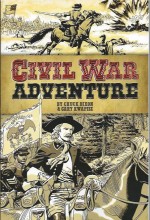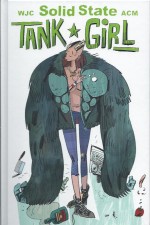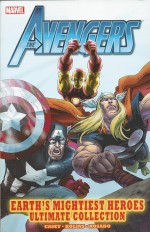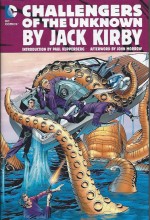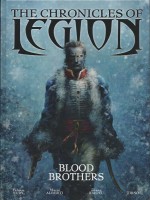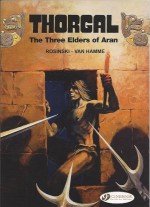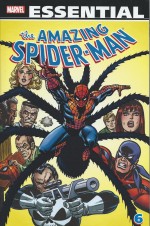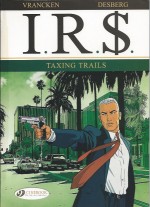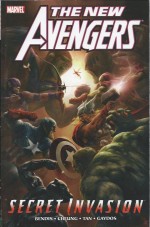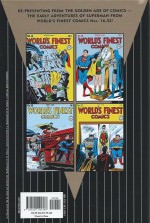
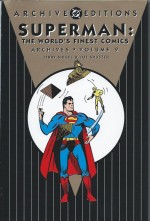
By Jerry Siegel, Don Cameron, Alvin Schwartz, Joe Samachson, Sam Citron, Ed Dobrotka, Ira Yarbrough, John Sikela, George Roussos, Stan Kaye & various (DC Comics)
ISBN: 978-1-4012-2470-7
The debut of Superman rapidly propelled National Comics to the forefront of their fledgling industry and in 1939 the company was licensed to produce a commemorative extra-length comicbook celebrating the opening of the New York World’s Fair. With the Man of Tomorrow prominently featured on the appropriately titled New York World’s Fair Comics, the premium also featured such four-colour stars as Zatara, Butch the Pup, Gingersnap and The Sandman.
The experiment generated another such titanic tome a year later, and since the prodigious card-covered 96 page anthologies were a tolerable hit, the editors were inclined to further test the waters through another oversized anthology starring only their own pantheon of characters with market-leaders Superman and Batman prominently featured.
The format was retained for a wholly company-owned, quarterly high-end package, retailing for the then hefty price of 15¢. Launching as World’s Best Comics #1 (Spring 1941), the book transformed into the somehow-deemed-classier World’s Finest Comics from #2, beginning a stellar 45 year run which only ended as part of the massive clear-out and decluttering exercise that was Crisis on Infinite Earths.
Until a cost-cutting exercise in 1954 reduced the page count, the first 70 issues of World’s Finest only saw Superman, Batman and Robin united on the covers. From #71 (cover-dated July) onwards, however, the three began a long-lived partnership that lasted more or less until the title was cancelled.
This deliciously deluxe hardback Archive edition collects the Action Ace’s solo exploits from World’s Finest Comics #16-32 (Winter 1945 to January/February 1948) in gleaming, seductive full-colour and also includes an incisive Foreword by fan, historian, and comics creator Jim Amash as well as the now-traditional creator biographies.
With stunning, eye-catching covers from Jack Burnley, Dick Sprang and Win Mortimer, this fabulously exuberant compendium opens with the regrettably anonymous ‘Music for the Masses!’ illustrated by Sam Citron & George Roussos wherein Clark Kent and Lois Lane help a starry-eyed hick songwriter escape the machinations of arch conman J. Wilbur Wolfingham to find stardom and true love, and World’s Finest Comics #17 provided thrills and spills in Don Cameron, Citron & Roussos’ ‘The Great Godini!’, wherein a reformed convict struggles to escape his notorious past whilst attempting to forge a career as a stage magician and escapologist…
‘The Junior Reporters!’, by Alvin Schwartz & Ed Dobrotka, sees a young newsboy prove his grit and integrity in a journalism competition, scoring his first major scoop by exposing the crooked schemes of his older brother’s gang, after which WFC #19 details Cameron & Ira Yarbrough’s ‘The Battle of the Zodiac!’ as Lois’ investigation of a shady swami leads to a spectacular, phantasmagorical clash between the Man of Steel and animatedly aggressive astrological embodiments.
After swiping advanced electronic and atomic components, creepy Winslow Schott becomes ‘The Toyman: Super-Scientist!’ (Cameron, Dobrotka & Stan Kaye), bedevilling the Metropolis Marvel with lethally devious devices, whilst from #21, ‘The Plane of Tomorrow!’ (Joe Samachson, Yarbrough & Roussos) finds Superman feeling uncharacteristically jealous when Lois seemingly switches her fickle attentions to a dashing jet designer targeted by a dodgy industrialist…
When Lois and Clark are despatched north to cover radium mining they uncover a strange mystery. Aging prospector John Borealis seems to be just a crazy old man handing out gold to his struggling fellows but he harbours a dangerous secret which draws out an army of bandits in ‘The Siege of Aurora Roost!’ (Schwartz, Yarbrough & Kaye in #22)…
When a handful of silent screen stars attempt a comeback they begin dotting the city with vast imitations of the Seven Wonders of the World. As the poorly built edifices begin to crumble, Superman steps in to save the day as ‘The Colossus of Metropolis!’ (Cameron, Yarbrough & Kaye from World’s Finest Comics #23), after which those artists delineate the again-anonymously-scripted ‘Impossible But True!’ wherein the presenter of a new TV show tells more and more blatant lies on camera.
What nobody knows is that poor Olga Olmstead is being fed false info by ruthless kidnappers and the Man of Tomorrow is biding his time until he can strike…
‘Mad Weather in Metropolis!’ from WFC #25 (Cameron, Yarbrough & Kaye) follows similar themes when Lois is appointed Daily Planet meteorologist and resentfully fabricates impossible forecasts which Superman makes come true. What she doesn’t know is that the Caped Crimebuster is using her potty prognostications to help out an ailing sporting goods store and catch a gang of racketeers…
Co-creator Jerry Siegel returned after war service in 1946 and ‘The Confessions of Superman!’ (art by John Sikela & Kaye) saw him on top form as the promise of a huge charity donation convinces the Man of Might to pen his (somewhat expurgated) autobiography and then have to prove to his publisher that he did indeed perform the feats he described…
World’s Finest #27’s featured ‘The Man who Out-Supered Superman!’ (Siegel, Sikela & Kaye again ) wherein downtrodden love sick schnook Nelson Swayne devised numerous sharp ways of outdoing the Man of Steel to win back his flighty, star-struck girlfriend…
Paramount mad scientist Lex Luthor returned with a “life-ray†to plunder and pillage Metropolis, galvanising a giant statue into becoming ‘Superman’s Super-Self!’ (Cameron, Yarbrough & Kaye) whilst ‘The Books that Couldn’t be Bound!’ (Schwartz, Sikela & Kaye in #29) found Clark and Lois following a harried bookbinder as he strove to fulfil three all-but-impossible commissions. Naturally the Caped Kryptonian also turned up to assist as a unique apprentice…
‘Sheriff Clark Kent’ (Cameron, Win Mortimer & Dobrotka) took the Man of Steel to the Wild West but it was his meek alter ego and feisty little lad Roaring Pete who caught the cunning crook ramrodding the fearsome Rockdust Bandits…
Sheer whimsy guided ‘Superman’s Super-Rival!’ (Schwartz, Yarbrough & Kaye) as punchy boxer Dan the Dunce swipes an experimental sedative which turns him into a mighty muscled mauler able to mangle the Man of Steel and seduce away his girl Lois… The last tale in this volume – from World’s Finest Comics #32, Fall 1944 – is ‘The Seventh Wonder of the World!’ by Siegel, Yarbrough & Kaye, astoundingly detailing how Superman briefly visits ancient Egypt just in time to smash an army of proto-Nazis, liberate Pharaoh’s slaves and complete the Pyramid of Cheops. All in a day’s work, really…
These blockbusting yarns provide a perfect snapshot of the Caped Kryptonian’s amazing development from unstoppable, outlaw social activist to trusted and omnipotent paragon of American virtues in timeless tales which have never lost their edge or their power to enthral and beguile.
This is raw comicbook wonderment at its most primal and perfect.
© 1945, 1946, 1947, 1948, 2009 DC Comics. All Rights Reserved.

